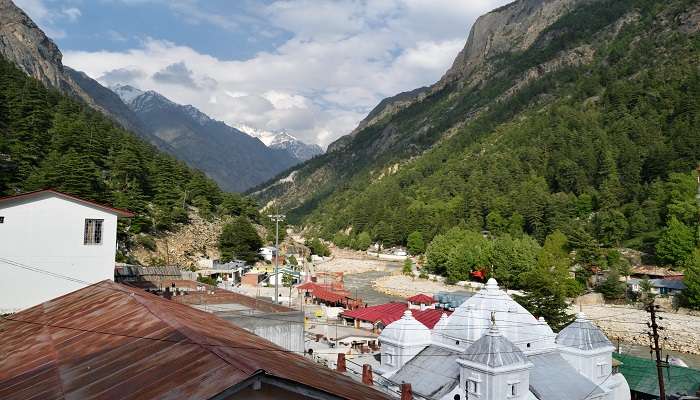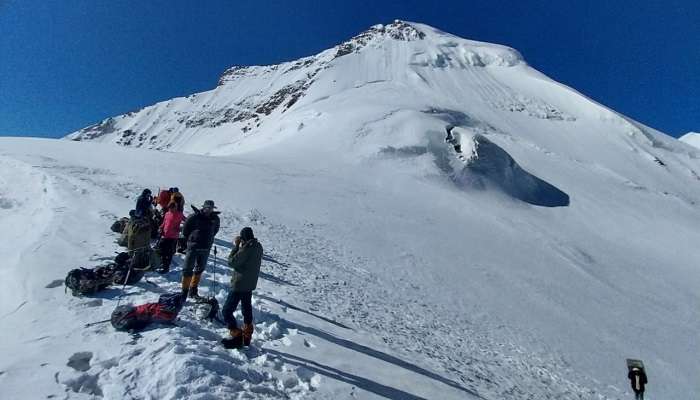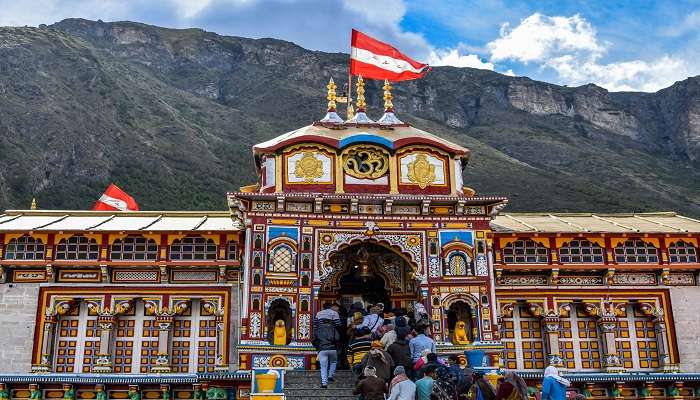Kalindi Khal Trek Is An Adventurous Trek In Uttarakhand To Explore In 2026

Kalindi Khal Trek is one of the most demanding treks among all the other trails people walk on. Situated in Uttarakhand, this pass stands at 5940 m above sea level. This pass connects Gangotri and Badrinath in the Garhwal Himalayas. One wonders why this trek is so tricky. The terrain is one of the main reasons. It is abode to many rocky screens, crevassed snowfields, and rough glaciers. Despite its difficulty level, beginners can enjoy this trek if they prepare well in advance. This trek is so famous due to its mesmerising views from the start to the summit. The beautiful glaciers, the fantastic sight of Mt Shivling, Bhagirathi peaks, the origin of River Ganga, Tapovan stream, and the mysterious and remote area of Vasuki Tal.
Brief Kalindi Khal Trek Itinerary

The Kalindi Khal trek height is about 5,942 meters. Here is a day-to-day itinerary for your Kalindi Khal Trek:
Day 1—It includes a drive from Rishikesh to Uttarkashi, also famously known as Northern Kasi. Uttarkashi is located on the right bank of the River Bhagirathi and is popular for the temples to Goddess Annapurna Devi, Goddess Kali, Bhairon, Datatryea, etc.
Day 2 – On the second day, you drive to Gangotri from Uttarkashi. Gangotri is one of the four major pilgrimages in Uttarakhand, attracting devotees and tourists from the country.
Day 3 – After breakfast, you embark on your trek to Cheerbasa, the first campsite in your journey.
Day 4 starts with a small ascent on the main trail to Gomukh. It is a 9 km walk that takes about 4-5 hours. Bhojbabsa is the next stop in your trek. It has a small, peaceful, and calm temple.
Day 5—The next day, you leave Gomukh, but the trail requires strength and patience from the hikers. After a steep climb, you reach Tapovan, where Shivling Peak, Meru, and Kedar Dome rise.
Day 6 – Day 6 is just for the acclimatisation of the body.
Day 7 – After acclimatisation, you descend to the Gangotri and Chaturangi glaciers. This trek includes various strenuous but fun and thrill-seeking activities like boulder hopping, mountain climbing, glacier traversing, etc.
Day 8—The next day, you trek to the Vasuki Tal glacial lake in the Chaturangi Bhamak, a neighbour to the Bhagirathi Bhamak. Here, you spend the night in tents.
Day 9 – Acclimatization
Day 10—The tenth day is long. You trek 6 hours to reach Khara Pathar, where you see the serene and only one of the two 7,000 m high mountains, Satapanth. You spend the night at this fantastic location.
Day 11 – You trek about 20 km to Sweta Glacier; however, you do not spend the night there as the terrain is unsuitable for camping.
Day 12—After acclimatizing for the first half of the day, you are ready to cross the Sweta Glacier. You reach Chatrungi glacier, which also means ‘four colours’.
Day 13 – You cannot climb the Kalindi Khal Peak as it requires years of experience and prior permission from the Indian Mountaineering Foundation. However, once you reach the pass, you will be gifted with a spectacular view of Mt Kamet, Mana Parbat, Abi Gamin, and Mt Mana.
Day 14 – On this day, you leave Raj Pravan and follow the Arwa stream to reach Ghastoli. During this entire trek, you see a change in the terrain. Slowly, the grey glaciers disappear, and in their place stands the big grass grounds of Ghastoli.
Day 15 – You walk alongside the River Saraswati to Mana, from where you can hitchhike in one of the army trucks, which will drop you off at Mana. After touring Badrinath, you finally ride to Joshimath to spend the night.
Day 16 – On your last day, you drive to Rishikesh. Day 15 can also be your trek’s last and final day if you wish to spend more time in Badrinath.
Also Read: Char Dham Yatra In Uttarakhand
Kalindi Khal Trek Cost Per Person

You must know that the Kalindi Khal trek costs per person depend on several factors, including the type of operator, services included, and group size. However, the average price ranges from INR 25,000 to INR 40,000. The cost usually covers accommodation, transportation to and from the base, meals, and camping gear. The inclusions may differ from package to package, and the price may fluctuate with time. Hence, it is advisable to do intense research before planning the trek.
Best Time For The Trek

One can plan the Kalindi Khal trek during the pre-monsoon, i.e. May-June, or post-monsoon, i.e. September-October. Monsoon weather is not recommended for trekking due to slippery paths and heavy rainfall. You may find the trail snow-covered during the pre-monsoon, which can be challenging for some. On the contrary, it is easier to trek post-monsoon with fewer chances of rainfall and pleasant weather. It can be chilly in winter, so you may avoid this season.
Related Post: Benog Wildlife Sanctuary
Things To Carry While Going On Kalindi Khal Trek

Whether this is your first time trekking or not, every trekker has the question, “What to carry?”. You need not worry because we have curated a list to remember everything and anything you need to carry. This list goes everything you need from top to bottom!
- Headlamps—These are required if you are camping or trekking at night. They are beneficial and significant.
- Hats—Hats protect you from cold winds at night and the hot Sun in the mornings. A better option would be carrying jackets that also have a hood attached, just in case you need to double-cover.
- Sunglasses – Trekking requires a specific type of sunglasses that protect you from UV rays and fit your face perfectly so that you can entirely focus on the trek and enjoy the view rather than adjusting your sunglasses now and then.
- Balaclava – These protect your mouth and neck from cold weather and keep you warm.
- Long-sleeve T-shirts—Long sleeves are a must as they protect your skin from the sun’s UV rays. Carry at least four to five so that you have more in case of an emergency.
- Trekking Jacket – A three-layer jacket is ideal for your trip.
- Thermals are lightweight and feel good when worn, but they also keep you warm.
- Gloves – One pair of gloves is sufficient to keep your hands warm.
- Comfortable lower – These include shorts, leggings, and pants. If the day is warm, leggings can be worn in the morning or evening, according to your comfort, and pants so you can trek without discomfort.
- Footwear—You must carry two types of footwear: waterproof trekking shoes with ankle support and comfortable slippers to wear in the evenings after walking the entire day.
- Backpack—Backpacks and daypacks are extremely important anytime you go on a trek. A lightweight backpack with a good hip and shoulder grip and accessible pockets is a must.
You May Also Like To Read: Places To Visit In Gangotri
After learning all the essential details about this exhilarating trek to the Himalayan Mountains in Uttarakhand, enjoy your time trekking through dense forests, glaciers, and snow-covered mountains. Now that you have all the details about the trek, it is time to book a trek on your trip to Uttarakhand. Embark on this adventure and experience sweet victory as you finish this problematic trek in the Great Himalayas.
For our editorial codes of conduct and copyright disclaimer, please click here.
Cover Image Credit: DipankarSen68 for Wikimedia Commons
Frequently Asked Questions About Kalindi Khal Trek
Where is the nearest airport to Kalindi Khal Trek?
The Jolly Grant Airport is in Dehradun, about 25 km away and it is the nearest airport to this place. If you plan to come by flight then arriving a day before your trek is advised.
Are there any compulsory documents that you should carry?
Yes, you must carry your identification cards/documents.
What is the difficulty level of Kalindi Khal trek?
Can you reach by train?
Yes, you can. There are two trains from Delhi to Dehradun - Nandadevi Express and Dehradun Express.
How many days does it take to finish the trek?
The trek to Kalindi Khal Trek usually takes up to 12 to 15 days to finish. However, it depends on your pace of how much time you take to complete the trek.
People Also Read:
Khaliya Top Pangi in Himachal Pradesh Bali Pass Trek

We all have to begin somewhere. This is where I start and I hope that my writings encourage you to begin. To new beginnings and conquering new places!











